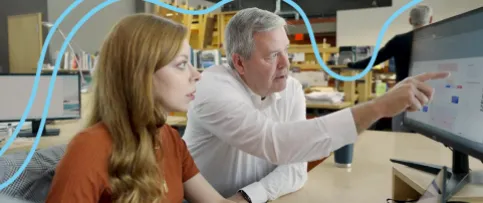Nothing could stop Mary Melissa Yohn, AIA, NCARB, from reaching her goal of licensure. We caught up with the Alabama architect to learn how she became a leader in her community and stayed motivated to complete the Architect Registration Examination® (ARE®) in just 13 months—even after having to retake the first exam.
When did you realize you wanted to become an architect?
My dad is a contractor, although he originally started out as a banker in construction lending. He changed professions mid-career and started his own homebuilding business from the ground up. So watching him succeed in the construction field was a huge source of inspiration—not only to become an architect, but to own my own firm one day. Getting to tag along on job sites was also a plus!
Why was earning a license important to you?
I’ve been goal-oriented from an early age, so the challenge of obtaining a license was always in the cards. I aimed to finish all seven exams in a year—and nearly achieved it!
You completed the ARE in just over a year. Tell us about your study strategy.
My study strategy was pretty straightforward. I loosely plotted out a timeline to take an exam every six weeks or so. Then I studied like mad! Although I allowed myself flexibility if I felt I needed more time. I recommend researching study tips and strategies. While waiting for approval from my state board to test, I poured through online forums, reading testimonials from those who had already passed the ARE. For me, formulating a logical sequence of exams was crucial. By being strategic about the order in which I took the exams, I was able to drastically reduce the amount of “double-studying.”
What do you wish you knew before starting your path to licensure?
I don’t think anything could’ve prepared me to fail my first exam. I wish I’d known the feeling ahead of time so I could have moved past the letdown more quickly. I just had to dive back in and keep going. Eventually, I took that first exam again and passed with flying colors.
How did you earn hours in those “hard-to-reach” Intern Development Program (IDP) categories?
I was lucky to be able to attend Auburn University’s Rural Studio for my college thesis, which allowed me to earn hours in Community-Based Design Center/Collaborative. Plus, two years of hands-on experience allowed me to count hours toward a number of areas (like Site Visits With a Mentor) that can be difficult to log once you’re sitting behind a computer full time. If I ever needed to earn hours in a particular category, I was vocal about it. And my firm’s leadership was great about getting me out to a job site or in to a coordination meeting with engineers.
You’ve been involved with a number of professional organizations. What are some of the benefits of getting involved early in your career?
Community involvement is invaluable in my opinion. Not only is it a great way to meet new people after moving, but it’s also vital to being an architect. Getting to know your city council, attending public hearings and community design charrettes, volunteering for nonprofits, and becoming involved in professional organizations helps connect us to where we live and work. Getting out from behind your desk forces you to explore and engage, allowing you to see firsthand how your work affects the broader community. Plus, you’ll better understand how your projects are funded, zoned, critiqued, and ultimately built.
Not to mention that many of these opportunities count toward the IDP. Volunteering for a construction-related nonprofit could earn you hands-on construction observation or project management experience. Getting involved in your local AIA chapter, through either the Emerging Professionals or Young Architects Forum, is a great way to log hours toward leadership and service. The possibilities are endless and the benefits greater.
How does having an NCARB Certificate distinguish you from other architects?
I’m licensed in my home state of Alabama, but plan to seek reciprocity in Tennessee next year once I fulfill their three-year duration requirement. Maintaining an NCARB Certificate provides flexibility, as I’m able to take my career wherever it may lead. Plus, I have a credential recognized and respected throughout the country.
What advice do you have for other young women entering the profession?
Don’t be afraid to play ball with the boys. You are a valuable and necessary voice in this field, and you’re a force to be reckoned with! Ask a million questions. Trust yourself. Being a woman in architecture is empowering—don’t underestimate your strengths, and strive to learn every day.
What was it like to be part of the 2015 Intern Think Tank?
The Intern Think Tank (ITT) was such a great opportunity. The community of aspiring architects was vocal, and NCARB was receptive to all of our ideas, no matter how off-the-wall. The fact that NCARB would invite us to the table to share our opinions and hear our suggestions is a testament to the progress we’re making in the field of architecture. Our ITT work is ongoing, and it will be interesting to see what comes of our continued conversations!
Mary Melissa currently works at Tuck Hinton Architects in Nashville and is an active member of several local organizations including Rebuilding Together Nashville, Tennessee and middle Tennessee AIA emerging professionals committees, and Nashville Civic Design Center Young Urbanists.


